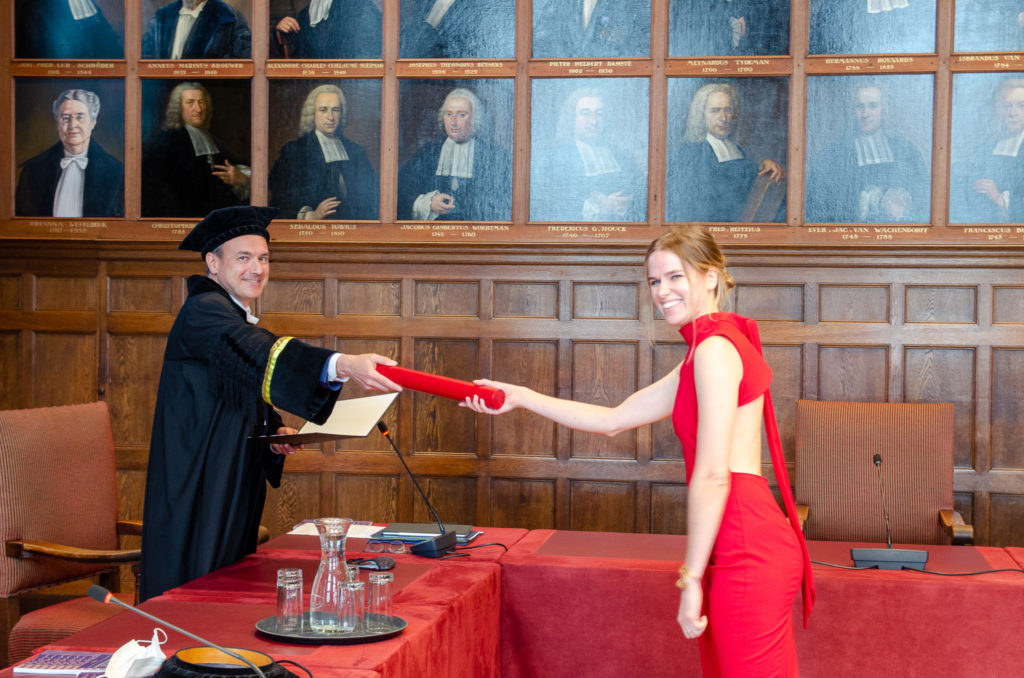PhD defense of Guusje Delen
“A new view on nanomaterials in action.”
Small materials, large effects: because of their size, nanomaterials usually behave differently than their larger counterparts. For example, they are often better at absorbing and converting gasses, such as CO2 or poison gases. But why? To answer this we need new microscopes to witness these materials in action. But how do you do that when such materials are many times smaller than a grain of sand? This PhD project shows how an “old” technique can learn new tricks to study nanomaterials in action.
Infrared spectroscopy uses infrared light to study molecular bonds. Unfortunately, the wavelength of infrared light is quite large and so traditionally we cannot measure on the desired nanoscale. However, by using a nano-antenna we can circumvent this limitation. This antenna can easily be compared to a gramophone needle that plays the right music depending on its location on the record.
Also for nanomaterials location turned out to be very important. For example, in the presence of water vapor the nano-antenna saw that materials that had small mistakes in their molecular structure were much more sensitive to “rusting”. And for materials in poison gases it turned out that crystal corners and edges performed much more work than the planes in between. So, if you make a material with more corners, you will get more poison gas deactivation. Thus, the case studies in this PhD project showed how the nano-antenna method can help producing better materials in the future.
Congratulations on this achievement!
Source: website Utrecht University

